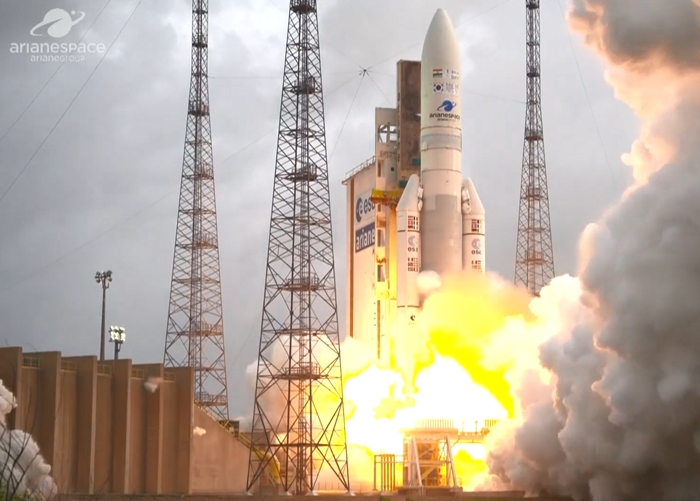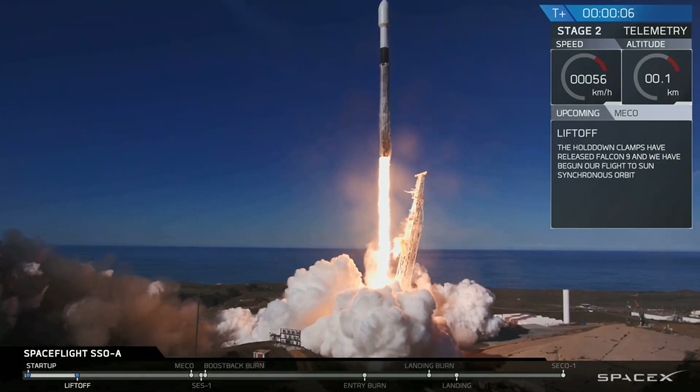
The Ariane 5-ECA rocket carrying the Korean weather satellite Chollian 2A on Dec. 4 blasts off from the Guiana Space Center in French Guiana. (Arianespace)
Korea has taken another major step forward in space technology by launching the weather satellite Chollian 2A on Dec. 4 at the Guiana Space Center in French Guiana.
From design, manufacturing and testing to launch, the entire process of building and sending the satellite into space utilized the country’s own technology. After about six months of initial operations, the Chollian 2A from July will monitor weather conditions around the Korean Peninsula and space to provide advanced weather services for 10 years.
Its predecessor Chollian 1 merely transmitted black and white clips, thus problems arose in differentiating new clouds, forest smoke, yellow dust and volcanic ash. The Chollian 2A is expected to resolve these problems by sending images in three primary colors – red, green and blue.
Furthermore, the new satellite will take just three hours and ten minutes to travel and observe around the Earth. Its enhanced risk management service will also watch for heavy rainfall, with reports on the conditions of a monitored area every two minutes.
Choi Won-ho, an official at the Ministry of Science and ICT, said, “Through the successful launch of the satellite, Korea now has its own platform for 3.5t geostationary satellites.”
Experts also expect the Chollian 2A to help the country develop a communications satellite by applying a communication payload.
Korea has recently made notable advances in space technology, as evidenced by the launches of the orbital rocket Nuri on Nov. 28 and a communications satellite on Dec. 3, along with the development of Korea’s 75t liquid propulsion engine for rockets.

A SpaceX Falcon 9 rocket carries the Korean communication satellite launch on Dec. 3 at Vandenberg Air Force Base in California (SpaceX)
SOURCE: KOREA.NET


